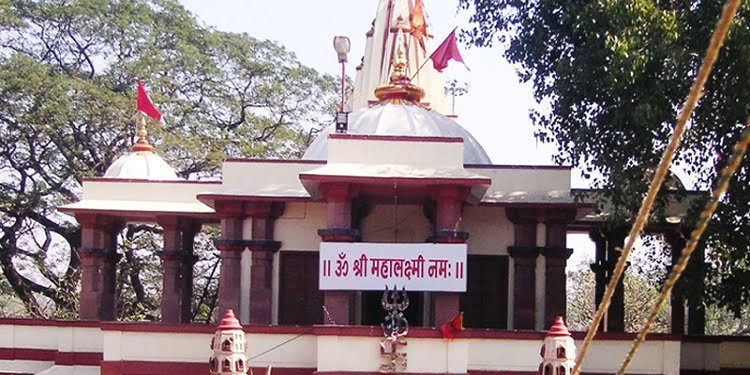Exploring the Magnificence of Mahalaxmi Temple in Mumbai

The Mahalaxmi Temple, located in the bustling city of Mumbai, India, is a renowned place of worship dedicated to Mahalakshmi, the central deity of Devi Mahatmyam. Built in 1831 by Dhakji Dadaji, a Hindu merchant, this temple has become a significant spiritual destination for thousands of devotees from around the world.
Managed by the “Shri Mahalakshmi Temple Trust,” a religious and charitable trust, the Mahalaxmi Temple houses three deities: Shri Mahalakshmi, Shri Mahakali, and Shri Mahasaraswati. Devotees flock to the temple daily, with the numbers reaching hundreds of thousands during Navaratra, Diwali, and the month of Margashirsha. The belief that the Mahalakshmi deity is ‘Jagrut’ or alive adds to the temple’s allure.
The Mahalaxmi Temple is a testament to the profound concept of Devi Tattva, the Shakti cult. Devi Tattva represents the supreme power of Parabrahman, the prime force. Adi Shakti, also known as Para Shakti, embodies this transcendental power. Maha Maya Shakti, the great power of World Illusion, and Adyashakti are different names for the same force. According to the “Sankhya Darshan” of Hindu Philosophy, the creation of the universe is the result of the union of “Purusha” and “Prakruti.” Purusha symbolizes “Parabrahman,” while Prakruti represents “Nature.” Prakruti consists of three “Gunas” or qualities: Sattvic, Rajasic, and Tamasic, depicted by the three deities in the temple – Shri Saraswati, Shri Mahalakshmi, and Shri Mahakali.
The nine-day worship known as Navaratra is divided into three groups of three days each. During the first three days, devotees worship the mother as manifested through the form of Shri Mahakali or Durga. The following three days are dedicated to worshipping her as Shri Mahalakshmi, and the final three days focus on Shri Mahasarswati.
Legend has it that during the reign of Muslim invaders, the Hindus submerged the three idols of the goddesses into the sea near Worli creek to protect them. Later, during British rule, the task of connecting the two islands, Worli-Malbar Hill creek, was assigned to Shri Ramji Shivji Prabhu, a government engineer. Despite facing difficulties, he received divine guidance from Shri Mahalakshmi in a dream. The goddess instructed him to retrieve the idols from the sea and place them on top of the hillock. Following her guidance, the engineer successfully connected the two creeks and obtained land on the hillock as a gift from the English ruler.
With the funds of Rs.80,000, the Mahalakshmi Temple was constructed between 1761 A.D. and 1771 A.D. on top of the hillock. Today, the Mahalaxmi Complex is designated as a heritage precinct due to its architectural and archaeological value. The temple’s unique street scape, traditional temple shrines, and picturesque surroundings contribute to its charm. Walking through the complex, one can admire the vernacular domestic architecture, low-rise residential buildings, and vibrant streets adorned with flower and sweet vendors.
Visiting the Mahalaxmi Temple offers a spiritual experience like no other. The rich history, cultural significance, and devotion surrounding this sacred site make it a must-visit destination for both locals and tourists alike.
![]()
![]()